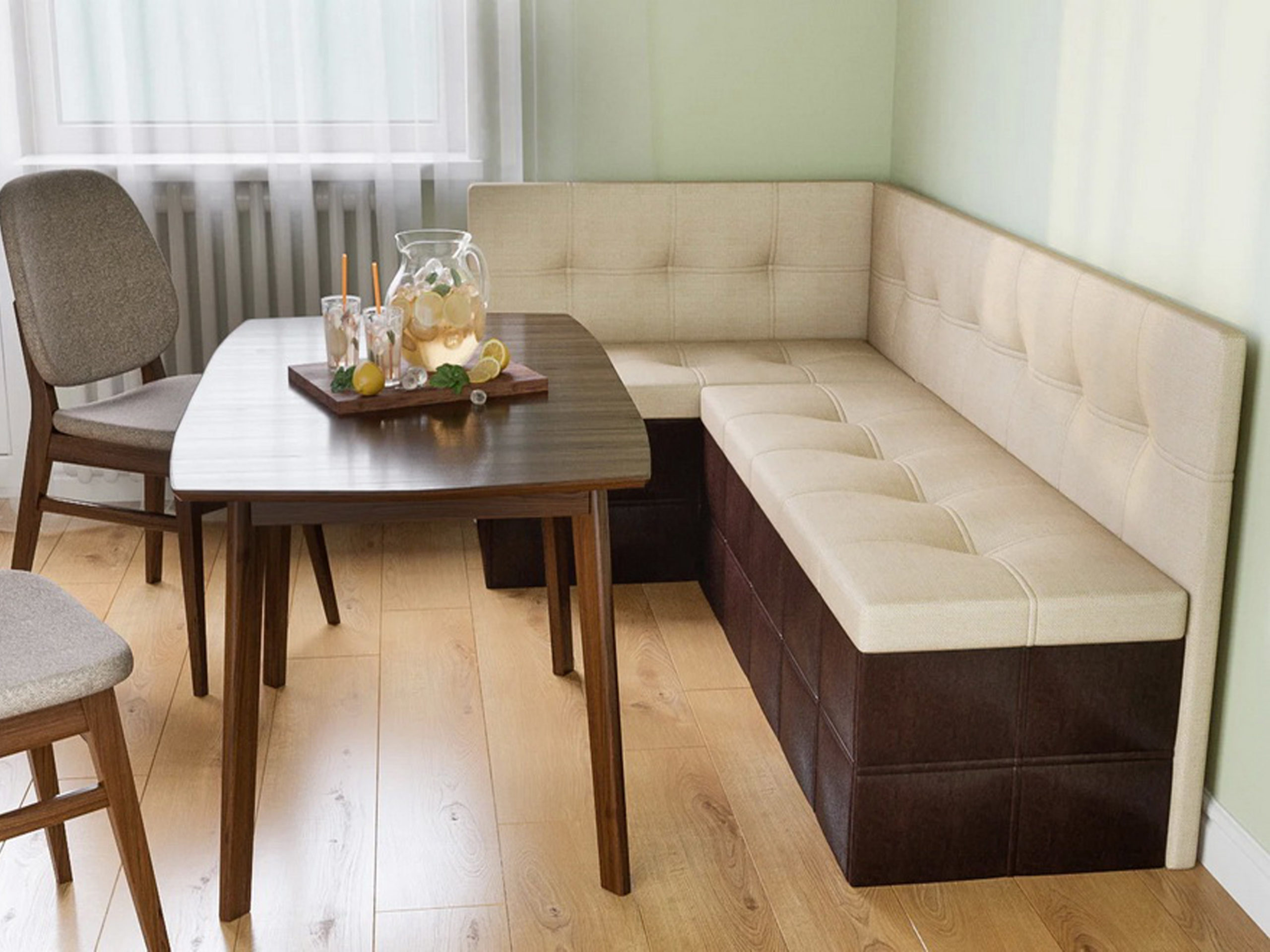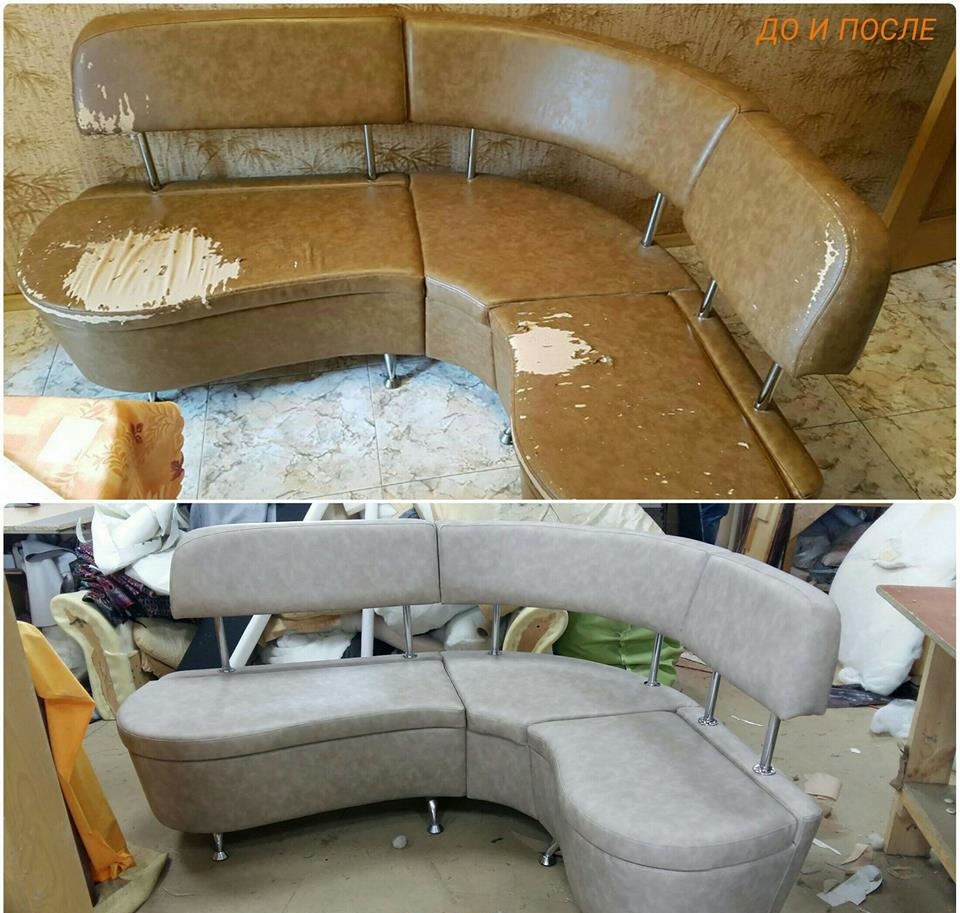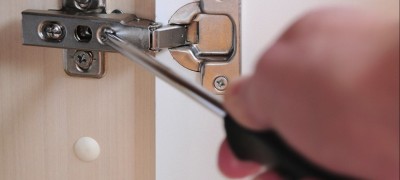How to drag a kitchen corner with your own hands
In our country, for many people, the kitchen at home is not only a place for cooking or gathering the whole family for an evening dinner. Here we host guests, discuss the latest news with friends and even hold business meetings. Therefore, in most apartments, a soft, comfortable kitchen corner is an indispensable piece of furniture.

But due to such intensive use, the corner quickly loses its original appearance - the structure begins to loosen, the upholstery material loses its color, wears out, and mechanical damage in the form of scratches, cuts and holes is not uncommon.

And how many times some liquid is spilled on the kitchen corner - you can't count. In addition, it is necessary to take into account the specifics of the premises itself. Vapors are always present in the kitchen, due to which gradually the upholstery material and filler are saturated with moisture, losing their original strength.

Banner and restoration of the kitchen corner
For many people, the purchase of a new kitchen corner always fades into the background, as it is expensive and there are always more important and necessary things to buy.

In such a situation, restoration and hauling of the kitchen corner becomes a good option. Of course, you can give the furniture to a specialized workshop or call the master directly to your home, but you can do this work yourself.

Such furniture has a rather simple design, therefore, even a person without experience, who has never wondered how to pull the kitchen corner, can do the restoration.
Choice of materials
The most popular types of material for upholstery furniture corner for the kitchen are tapestry, velor, artificial or natural leather. For a longer service life, go for the strongest fabrics.

Genuine leather is an expensive material, but at the same time it is a very durable material that will serve you for a very long time. Foam rubber is usually used as a filler. It is desirable to use it more dense and high, then the furniture will be more comfortable and voluminous.

It is also worth preparing a few pieces of plywood as they can come in handy for replacing damaged frame elements. In addition, prepare the glue with which you will glue the filler.

Required tools
To carry out the restoration and upholstery of the kitchen corner with your own hands, you will need the following tools:
- Stapler remover and furniture stapler. You will need them to remove the old upholstery and attach the new one.If there is no staple remover, then you can use a regular knife to remove the staples;
- Scissors;
- Hammer;
- A set of open-end wrenches for disassembling the frame;
- Ticks;
- Pencil.

Of course, this is just the minimum required set, you may need other tools, but this will already depend on the complexity of the repair work.

Stages of work
When pulling furniture, several stages can be distinguished that will be necessary in all cases with rare exceptions. Consider how to sheathe a kitchen corner with your own hands, in more detail.
Removing the upholstery
To remove the upholstery, you need to get access to the parts we need. If the kitchen corner from the back is covered with a sheet of fiberboard, then carefully detach it. Use a staple remover to remove the furniture brackets that attach the old upholstery and remove it as carefully as possible, as we will need it in the future.

The filler in kitchen corners is usually glued to the frame. Therefore, tearing it off the glue will not be difficult. In case, somewhere after that, there are remnants of filler on the plywood of the frame, remove them with a knife.
Cut fabric and filler
First, you need to prepare patterns for new upholstery on thick paper. This is where the old upholstery comes in handy. Straighten it with your hands, and in case of a strong jam, iron it with an iron. After that, spread it out on paper and trace around the perimeter with a pencil, including all the gaps.

After that, cut out the templates from the paper, according to which you can start cutting the prepared material.
The foam rubber for the filler is cut in exactly the same way.
Important! To keep the shape for as long as possible, add 1 cm from each edge when cutting the filler.
Frame repair
Take a close look at the frame of your kitchenette with the upholstery removed. Clean the elements from contamination if necessary. Minor cracks can be filled with glue. If there are badly damaged elements, then you must carefully unscrew them.

Measure the removed parts and cut new parts from the prepared plywood according to the obtained dimensions. Drill mounting holes in the desired locations. Assemble the frame with new parts.
Padding and assembly
Glue is applied to the plywood of the base of the kitchen corner, on which foam rubber is planted. Next, you need to cover the corner parts with the material and fix the fabric with the help of furniture brackets and a stapler.

Work with the fabric slowly and carefully to avoid tears and distortions of the upholstery. If the kitchen corner consists of blocks, then the corner part is first assembled, and then the side ones. Finish the assembly of the kitchen corner by securing the back wall of fiberboard.
How to sew a cover yourself
To preserve the upholstery, you can use a corner cover. First you need to choose the shape of the cover and the fabric. Draw yourself or find the appropriate pattern on the Internet. Take some old fabric, cut it out according to the pattern and sew it.

Try on the resulting rough version on your corner. If defects are found, eliminate them. If you are satisfied with how the trial version sat on the corner, then proceed to the pattern of the main material. Sew in zippers and buckles as needed. Decorate the cover as you like.

Slip the finished cover over your kitchen corner.But do not get carried away with decorating too much, because this is a cover designed for a kitchen corner, and an abundance of decorative elements will look inappropriate there.

Advantages and disadvantages of self-tightening
The advantages of this approach include the following:
- saving money;
- the ability to perform work in your free time;
- matching the new type of corner to your tastes and preferences;
- pride in independent work and the experience gained in repair.

In addition, during the restoration, it is possible to make some changes to the design of the furniture. You can give free rein to your imagination and come up with a completely new design for the old kitchen corner.

The disadvantages of repairing a kitchen corner with your own hands include the fact that, due to the lack of experience in such work, it is not always possible to achieve a good result the first time.

Is it possible to drag other furniture
You can drag the old upholstery onto other furniture as well. Nowadays there are many specialized companies offering services for the restoration of sofas, armchairs, chairs, stools, ottomans and other pieces of furniture.

Thus, hauling the kitchen corner with your own hands will not only allow you to update the appearance of furniture, repair damaged parts, but also give a special individual style to your kitchen, while saving a significant part of your money.

Furniture, decorated with your own hands, will create a special atmosphere of home comfort, which is so important. After all, it is in the kitchen that the family gathers after a long day at work to eat, communicate and share their impressions; it is to the kitchen that close relatives and friends are often invited, who will be pleasantly surprised by a new thing.

Video: do-it-yourself kitchen corner hauling







